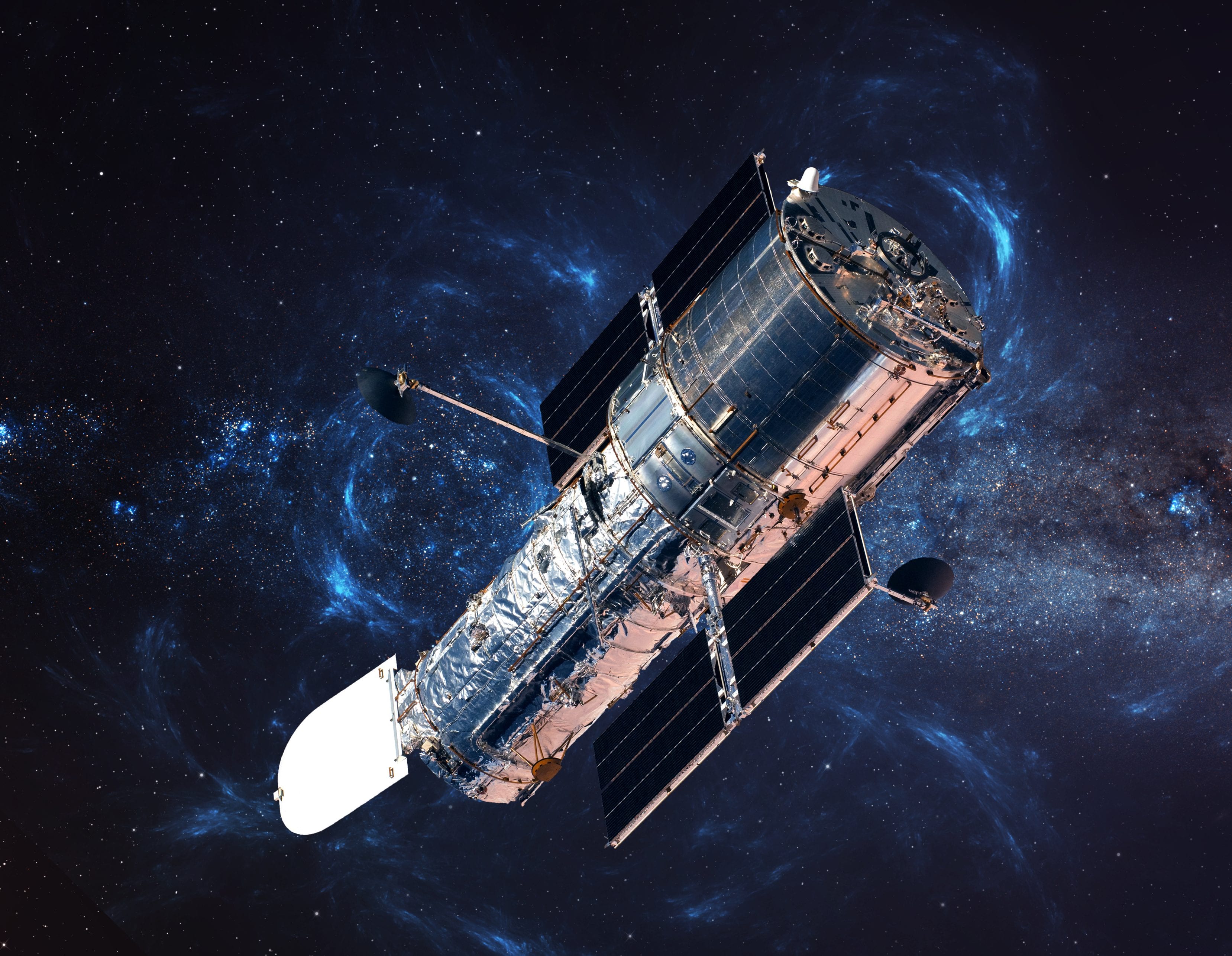
Limited aiming capability is allowed by Earth’s motion and by some movement of the panels of the dish and of the overhanging antenna.Īstronauts John Grunsfeld and Richard Linnehan with the Hubble Space Telescope, 2002 NASA Lying level in a natural depression, the main antenna of this instrument has a diameter of 500 metres (about 1,600 feet). The largest single-unit radio telescope is the Five-hundred-metre Aperture Spherical radio Telescope (FAST) located in Guizhou province, China. The world’s largest steerable dish is the 100-metre (328-foot) telescope at Green Bank, West Virginia. They vary in construction, though they are typically huge movable dishes. Today’s radio telescopes are capable of observing at most wavelength regions, from a few millimetres to about 20 metres. Soon thereafter the American engineer and astronomer Grote Reber constructed a prototype of the radio telescope, a bowl-shaped antenna 9.4 metres (31 feet) in diameter. The American engineer Karl Jansky detected radio signals from the centre of the Milky Way Galaxy in 1931 by means of a linear directional antenna. The ability to observe the universe in the radio region of the spectrum was developed during the 1930s. The largest modern-day optical telescope is the 10.4-metre (409-inch) Gran Telescopio Canarias reflector on La Palma, in the Canary Islands, Spain. Most notable in this array of instruments are the two 10-metre (394-inch) Keck telescopes, the 8.2-metre (320-inch) Subaru Telescope, and the two 8.1-metre (319-inch) Gemini telescopes. Today the site of the world’s largest grouping of large optical telescopes is atop Mauna Kea on the island of Hawaii. The first notable premodern European observatory was that at Uraniborg on the island of Hven, built by King Frederick II of Denmark for Tycho Brahe in 1576 ce. The most productive Islamic observatory was that erected by the Timurid prince Ulūgh Beg at Samarkand about 1420 he and his assistants made a catalog of stars from observations with a large quadrant. A splendid one was built at Marāgheh (now in Iran) about 1260 ce, and substantial modifications in Ptolemaic astronomy were introduced there.

Observatories were built at Damascus and Baghdad as early as the 9th–10th century ce. The true predecessors of the modern observatory were those established in the Islamic world. There he discovered precession and developed the magnitude system used to indicate the brightness of celestial objects. Perhaps the first observatory that used instruments for accurately measuring the positions of celestial objects was built about 150 bce on the island of Rhodes by the greatest of the pre-Christian astronomers, Hipparchus. There is again no evidence of any scientific instrumentation, even of a rudimentary nature. The Maya people of the Yucatán Peninsula in Mexico carried out the same practice at El Caracol, a dome-shaped structure somewhat resembling a modern optical observatory. No astronomical instruments appear to have been used. At about the same time, astrologer-priests in Babylonia observed the motions of the Sun, Moon, and planets from atop their terraced towers known as ziggurats. The most famous of these ancient structures is Stonehenge, constructed in England over the period from 3000 to 1520 bce. The predecessors of astronomical observatories were monolithic structures that tracked the positions of the Sun, Moon, and other celestial bodies for timekeeping or calendrical purposes. Optical observatories have a long history.

Britannica Beyond We’ve created a new place where questions are at the center of learning.100 Women Britannica celebrates the centennial of the Nineteenth Amendment, highlighting suffragists and history-making politicians.
#Space observatory how to
COVID-19 Portal While this global health crisis continues to evolve, it can be useful to look to past pandemics to better understand how to respond today.Student Portal Britannica is the ultimate student resource for key school subjects like history, government, literature, and more.From tech to household and wellness products. Britannica Explains In these videos, Britannica explains a variety of topics and answers frequently asked questions.This Time in History In these videos, find out what happened this month (or any month!) in history.



 0 kommentar(er)
0 kommentar(er)
